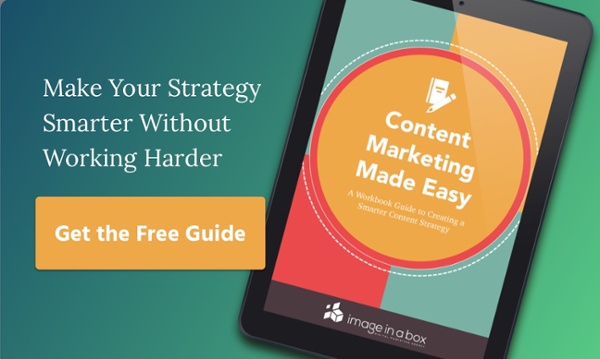Let me guess, you start your content planning by brainstorming content ideas, putting them on some sort of calendar, and then you start creating drafts.
That's what every marketer does, right?
But what if I told you, there's one step that's often missed beforehand.
A key step that helps highlight the abundance of content that you already have at your fingertips.
In this article, we're going to take you through that key step: a content audit.
So instead of having to generate tons of new content from scratch, you can easily tweak existing assets and repurpose them.
Read on to learn how to easily perform a content audit and incorporate what you find into your content marketing strategy.
Content Audit
 The whole reason we recommend doing a content audit is that you want to be as strategic as possible with your organization’s content. This means that when you are going through and inspecting your content that you should take your current target audience into consideration to ensure that you will have the right engagement with your site.
The whole reason we recommend doing a content audit is that you want to be as strategic as possible with your organization’s content. This means that when you are going through and inspecting your content that you should take your current target audience into consideration to ensure that you will have the right engagement with your site.
Why Content Audits Are Important
The two main reasons you should perform a content audit prior are to save money and identify gaps and opportunities in your content strategy.
Saving Money
Creating new content will cost money. Whether it’s paying someone to write blogs or buying equipment and software to make videos, new content is an investment. By auditing your content, you can rediscover forgotten assets that are reusable after they are refined to fit in with your new content strategy. Reusing and repurposing your old content can save your organization money in the long run.
Identifying Opportunities
After going through your current content and identifying your target persona, you may notice that you don’t have any content about a relevant topic to your audience. By doing a content audit, you are identifying the marketing assets you do have, and discovering what you are missing. Now that you know the gaps in your content strategy, you have an opportunity to create compelling content for your target audience.

How to Audit Your Content
We recommend keeping track of your content details in an Excel spreadsheet, like this one. For each piece of content you will record:
- Content Format - Blog, video, slideshow, etc.
- Buyer Persona - Who is the content targeted to?
- Performance - How it did on social media, page views, etc.
Content Audit Tips
- If you have a lot of content, then start by auditing your highest-performing pieces of content. This way, you can identify what type of topics did well with your audience.
- While blogs are a popular form of content, remember that videos, event photos, and news articles count as content, too! Be sure to include these in your content audit and plan because they could cover relevant topics for your audience.
When to Audit Your Content
You should audit your content before generating content ideas so that you know what you have to work with. After your initial audit, aim to do it annually to make sure your content stays relevant.
If you have a lot of content, don’t overwhelm yourself and try to do it all at once before moving on to topic generation. Instead, have an ongoing monthly process of auditing content, starting with the highest performing pieces.

What’s Next?
Now that you’ve done a content audit, here’s what you can do next:
-
Post and share all finished assets
Schedule to post any slides, videos, or blog drafts that you found in your audit that require little to no tweaking. This can help jumpstart more ideas for content generation.
-
Identify gaps in your buyer’s journey
The reason we recommend notating which buyer journey stage your content is in is because you want to ensure that your content hits all three stages: awareness, consideration, and decision.
If you notice that most of your content focuses on the awareness stage, then work on adding new material based on the other two stages in your content plan.
-
Determine which pieces of content did better than the rest
By auditing your content, you can see which topics and types of content your audience engaged with the most. You can create new, similar content around the same topics so that your audience continues to see your organization as relevant to them.
-
Pinpoint repurposing and recycling opportunities
You can create new content by repurposing your old, high-performing content. For example, if you had a popular blog post, then you can easily recreate an infographic or slideshow with the same content. Using a different format can be refreshing for your audience while still being relevant to topics that interest them.
Creating compelling, relevant content is an essential part of your marketing strategy. To make the process as smooth as possible, you have to start out with a strategic content plan. Auditing is a key step to content planning because it allows you to see what assets you already have, what topics your audience is interested in, and what your content strategy is missing.
Need help getting your content marketing started?
We want to help!
We've created a free workbook that guides you through each step of the content creation process.
And this 44-page guide gives you space to fill out your organization-specific details as you follow along.
Download it today!


